Akira (film)
7.6 /10 2 Votes
Genre Animation, Action, Sci-Fi Country Japan | 8/10 IMDb Director Katsuhiro Otomo Published 2003 Duration Language Japanese | |||||||||||||||||||||||||||||||||
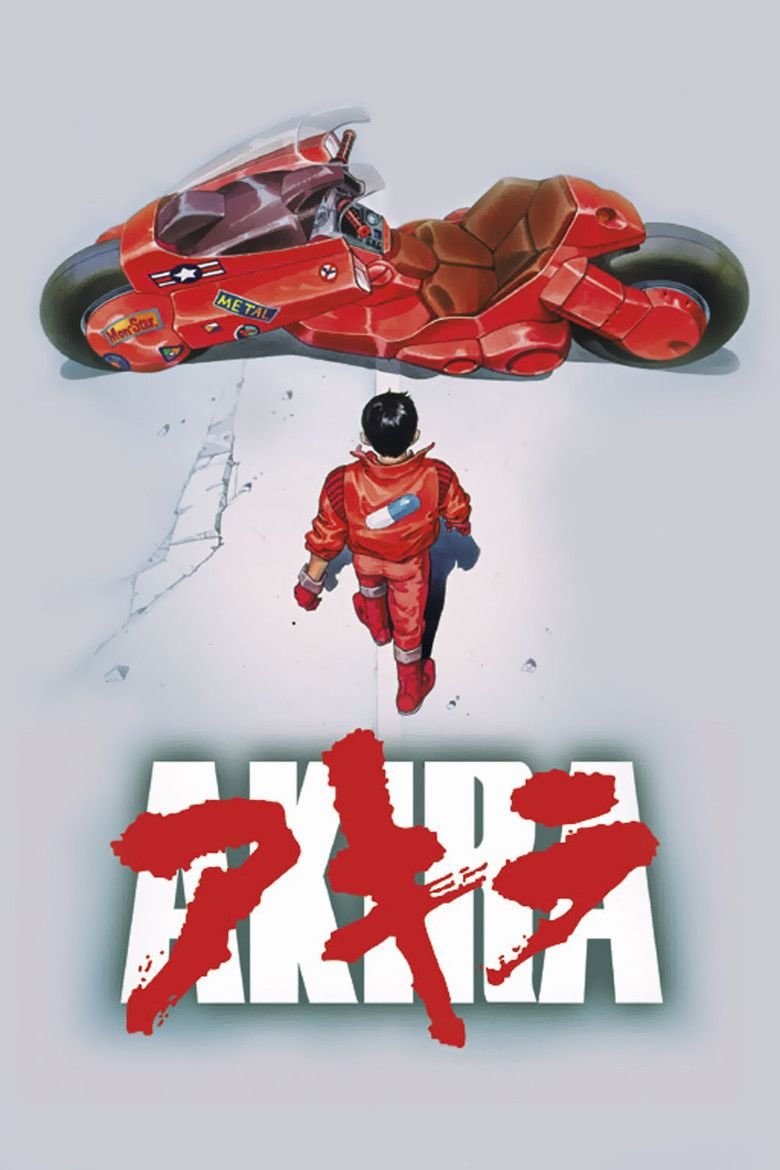 | ||||||||||||||||||||||||||||||||||
Release date 16 July 1988 (1988-07-16) Based on Akira by Katsuhiro Otomo Writer Katsuhiro Otomo (screenplay), Izo Hashimoto (screenplay), Katsuhiro Otomo (graphic novel), L. Michael Haller (dialogue), Heidi Wilbur (dialogue), Kevin Seymour (dialogue) Related Katsuhiro Otomo books Tagline Neo-Tokyo is about to E.X.P.L.O.D.E. Similar Ghost in the Shell (1995 film), Ghost in the Shell 2: Innocence, Metropolis (2001 film), Patlabor 2: The Movie | ||||||||||||||||||||||||||||||||||
Akira japanese theatrical trailer 1
Akira (Japanese: アキラ Hepburn: Akira) is a 1988 Japanese animated post-apocalyptic cyberpunk film directed by Katsuhiro Otomo, produced by Ryōhei Suzuki and Shunzō Katō, and written by Otomo and Izo Hashimoto, based on Otomo's 1982 manga of the same name. The film had a production budget of ¥1.1 billion ($9 million), making it the most expensive anime film of its time.
Contents
- Akira japanese theatrical trailer 1
- Akira 1988 Legendary Trailer
- Plot
- Production
- Releases
- Box office
- Home media
- Television
- Reception
- Critical reception
- Legacy
- Awards
- Soundtrack
- Video games
- Live action adaptation
- References
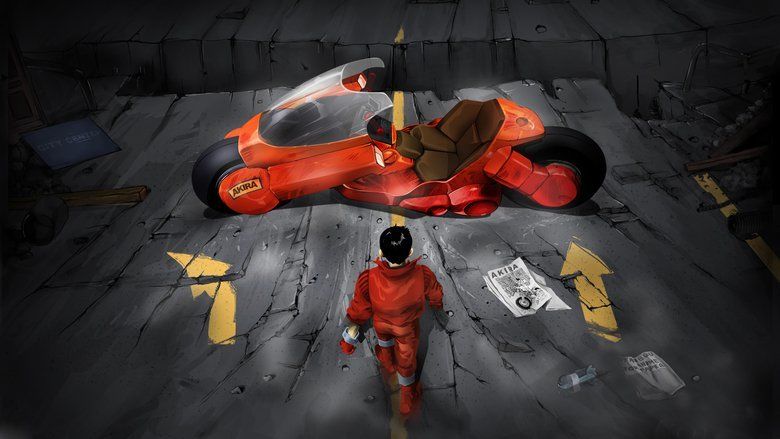
Set in a dystopian 2019, Akira tells the story of Shōtarō Kaneda, a leader of a biker gang whose childhood friend, Tetsuo Shima, acquires incredible telekinetic abilities after a motorcycle accident, eventually threatening an entire military complex amidst chaos and rebellion in the sprawling futuristic metropolis of Neo-Tokyo. While most of the character designs and settings were adapted from the manga, the plot differs considerably and does not include much of the last half of the manga. The soundtrack, which draws heavily from traditional Indonesian gamelan as well as Japanese noh music, was composed by Shōji Yamashiro and performed by Geinoh Yamashirogumi.
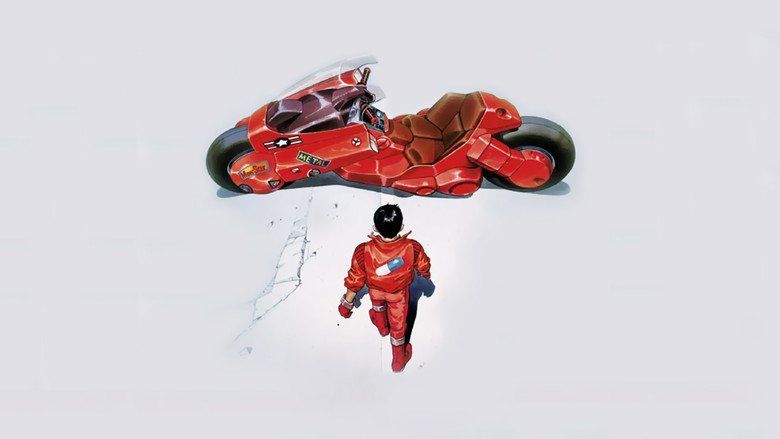
Akira premiered in Japan on July 16, 1988 by Toho, but was initially unable to recoup its budget. It was released the following year in the United States by pioneering animation distributor Streamline Pictures. It garnered an international cult following after various theatrical and VHS releases, eventually earning over $80 million worldwide from home video sales. It is widely regarded by critics as one of the greatest animated and science fiction films ever made, as well as a landmark in Japanese animation. It is also a landmark film in the cyberpunk genre, particularly the Japanese cyberpunk subgenre, as well as adult animation. The film had a significant impact on popular culture worldwide, paving the way for the growth of anime and Japanese popular culture in the Western world as well as influencing numerous works in animation, comics, film, music, television and video games.
Akira (1988) Legendary Trailer
Plot
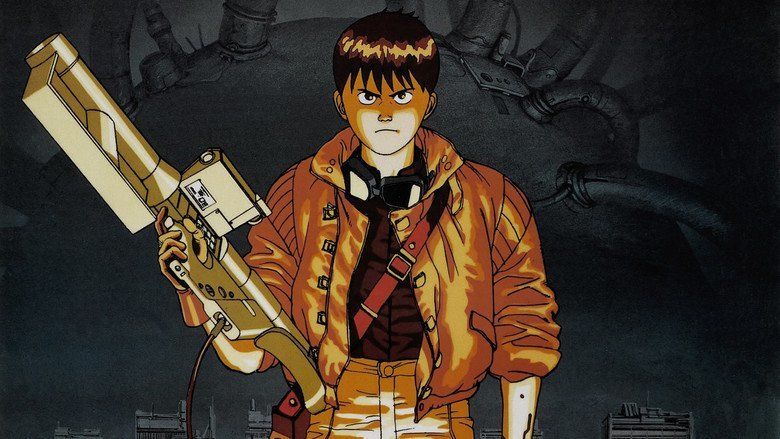
On 16 July 1988, a singularity destroys Tokyo. By 2019, Tokyo is rebuilt. Known as Neo-Tokyo, it is plagued by corruption, anti-government protests, terrorism, and gang violence and is on the verge of collapse. During a massive protest, the hot-headed Shōtarō Kaneda leads his vigilante bōsōzoku gang against the rival Clown gang. Kaneda's best friend Tetsuo Shima inadvertently crashes his motorcycle into Takashi, an esper (person with extrasensory perception) who escaped from a government laboratory with the aid of a resistance organization. The accident awakens psychic powers in Tetsuo, attracting the attention of a secret government project directed by Japan Self-Defense Forces Colonel Shikishima. Assisted by esper Masaru, Shikishima recaptures Takashi, takes Tetsuo with him, and arrests Kaneda and his gang. While being interrogated by the police, Kaneda meets Kei, an activist belonging to the resistance movement, and tricks the authorities into releasing her and his gang.
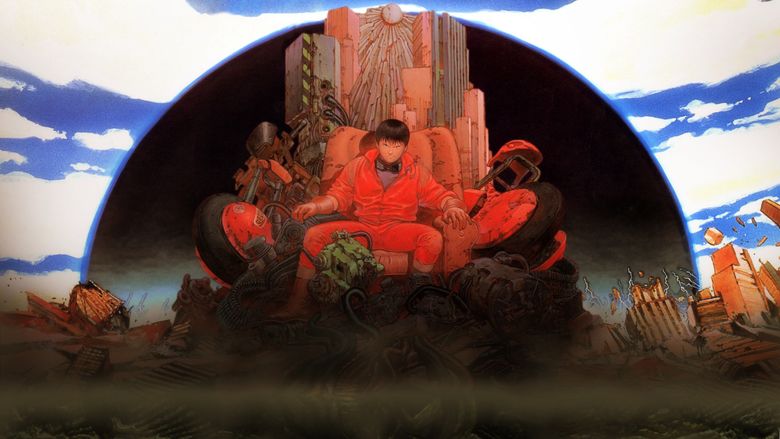
Shikishima and his head of research, Doctor Ōnishi, discover that Tetsuo possesses powerful psychic abilities similar to Akira, the esper responsible for Tokyo's destruction. Takashi's fellow esper Kiyoko forewarns Shikishima of Neo-Tokyo's impending destruction. However, Neo-Tokyo's parliament dismisses Shikishima's concerns, leading him to consider killing Tetsuo to prevent another cataclysm.
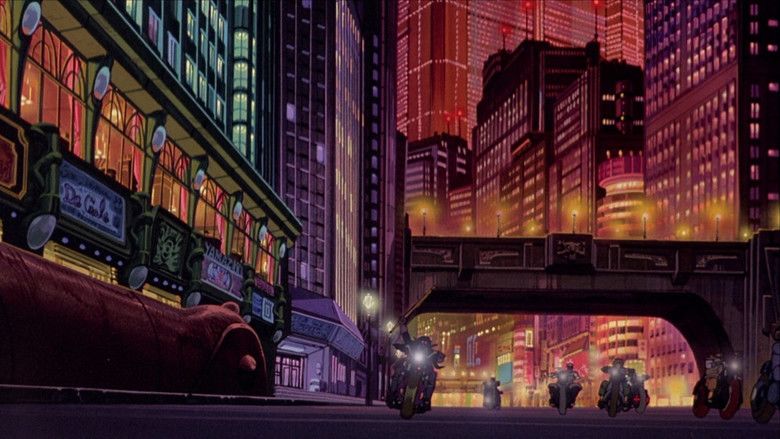
Meanwhile, Tetsuo escapes from the hospital, steals Kaneda's motorcycle, and prepares to run away from Neo-Tokyo with his girlfriend, Kaori. The Clowns ambush them, but they are saved by Kaneda's gang. During the intervention, however, Tetsuo begins suffering intense headaches and hallucinations, and he is returned to the hospital. Kaneda joins Kei's resistance cell after overhearing their plan to rescue Tetsuo and the other espers.

At the hospital, the espers confront Tetsuo, and he aggressively fights back with his psychokinetic powers and escapes. These powers are beginning to make him egomaniacal and unstable. Kaneda, Kei, and the resistance group infiltrate the hospital and are drawn into Shikishima and the espers' attempt to stop Tetsuo. He overpowers them all and leaves the hospital after learning from Kiyoko that he can gain help from Akira, who is in cryonic storage beneath the Olympic Stadium construction site.

Kei and Kaneda escape military custody due to Kiyoko, who is hoping to stop Tetsuo using Kei as a medium. Shikishima stages a coup d'état against the Neo-Tokyo government and directs all of its military forces to destroy Tetsuo. Tetsuo returns to his gang's former hangout, Harukiya Bar, to obtain drugs to control his powers. He murders the bartender and destroys the bar in the process. When his former friends Yamagata and Kai arrive and confront him, he cold-bloodedly slaughters Yamagata in front of Kai; Kaneda is informed by Kai of what happened and vows to avenge his friend. Tetsuo rampages through Neo-Tokyo, arriving at Akira's cryogenic storage dewar under the stadium. Kiyoko has Kei fight Tetsuo. He easily defeats her and exhumes Akira's remains. Using a laser rifle, Kaneda fights Tetsuo in a duel, and Shikishima fires an orbital weapon at him, but both fail to stop him.

Shikishima and Kaori approach the stadium; Tetsuo is in great pain and is losing control over his powers. Shikishima offers to return Tetsuo to the hospital, heal his injuries, and help control his abilities, while Kaori attempts to restrain Tetsuo. However, Kaneda arrives and duels with Tetsuo again.
Losing control of his powers, Tetsuo mutates into a gigantic mass, consuming all matter, engulfing Kaneda and killing Kaori. As the mass grows, the espers awaken Akira to stop it. After reuniting with his friends, Akira creates a singularity that draws Tetsuo and Kaneda into another dimension. The espers teleport Shikishima to a safe distance as the singularity destroys Neo-Tokyo in a mirror of Tokyo's previous destruction, and they agree to rescue Kaneda, knowing that they will not be able to return to this dimension.
In the singularity, Kaneda experiences Tetsuo's and the espers' childhood, including Tetsuo's dependence on Kaneda during their childhood, and how the children were trained and altered before Tokyo's destruction. The espers return Kaneda to his world, informing him that Akira will take Tetsuo to safety and that Kei is developing psychic powers.
The singularity disappears, and water floods the city. Ōnishi is crushed to death when the laboratory collapses on him. Kaneda discovers that Kei and Kai have survived, and they drive off into the ruins, while Shikishima watches the sunrise. Finally, Tetsuo introduces himself at another unspecified level of existence.
Production
While working on the Akira comic, Katsuhiro Otomo did not intend to adapt the series outside of the manga; however, he became "very intrigued" when the offer to develop his work for the screen was put before him. He agreed to an anime film adaptation of the series on the grounds that he retained creative control of the project — this insistence was based on his experiences working on Harmagedon. The Akira Committee was the name given to a partnership of several major Japanese entertainment companies brought together to realize production of an Akira film. The group's assembly was necessitated by the unconventionally high budget of around ¥1,100,000,000, intended to achieve the desired epic standard equal to Otomo's over 2,000-page manga tale. The committee consisted of Kodansha, Mainichi Broadcasting System, Bandai, Hakuhodo, Toho, Laserdisc Corporation and Sumitomo Corporation who all forwarded money and promotion towards the film. The animation for the film was provided for by animation producers, Tokyo Movie Shinsha (now TMS Entertainment).
Akira had pre-scored dialogue (wherein the dialogue is recorded before the film starts production and the movements of the characters' lips are animated to match it; a first for an anime production and extremely unusual even today for an anime., although the voice actors did perform with the aid of animatics), and super-fluid motion as realized in the film's more than 160,000 animation cels. Computer-generated imagery was also used in the film (created by High-Tech Lab. Japan Inc. and the cooperative companies for computer graphics, Sumisho Electronic Systems, Inc. and Wavefront Technologies), primarily to animate the pattern indicator used by Doctor Ōnishi, but it was additionally used to plot the paths of falling objects, model parallax effects on backgrounds, and tweak lighting and lens flares. Unlike its live-action predecessors, Akira also had the budget to show a fully realized futuristic Tokyo. The film's production budget was ¥1.1 billion ($9 million), making it the most expensive anime film of its time.
The teaser trailer for Akira was released in 1987. The film's main production was completed in 1987, with sound recording and mixing performed in early 1988. It was released in 1988, two years before the manga officially ended in 1990. Otomo is claimed to have filled 2,000 pages of notebooks, containing various ideas and character designs for the film, but the final storyboard consisted of a trimmed-down 738 pages. He had great difficulty completing the manga; Otomo has stated that the inspiration for its conclusion arose from a conversation that he had with Alejandro Jodorowsky in 1990. He later recalled that the film project had to begin with the writing of an ending that would bring suitable closure to major characters, storylines, and themes without being extraordinarily lengthy, so that he could know in reverse order which manga elements would make the cut into the anime and thus suitably resolve the manga's various elements into a lean, two-hour story.
Otomo is a big fan of Tetsujin 28-go. As a result, his naming conventions match the characters featured in Tetsujin 28-go: Kaneda shares his name with the protagonist of Tetsujin 28-go; Colonel Shikishima shares his name with Professor Shikishima of Tetsujin 28-go, while Tetsuo is named after Shikishima's son Tetsuo Shikishima; Akira's Ryūsaku is named after Ryūsaku Murasame. In addition, Takashi has a "26" tattooed on his hand which closely resembles the font used in Tetsujin 28-go. The namesake of the series, Akira, is the 28th in a line of psychics that the government has developed, the same number as Tetsujin-28.
A key animator who worked on Akira was former Shin-Ei animator Yoshiji Kigami. He animated several entire scenes in Akira, such as the action scene in the sewers. He later joined Kyoto Animation, and died in the 2019 Kyoto Animation arson attack at the age of 61.
Releases
Box office
Akira was released by Toho on July 16, 1988. At the Japanese box office, the film had a distribution income (distributor rentals) of ¥750 million in 1988. This was equivalent to a Japanese box office gross of approximately ¥1.7 billion in 1988. The film was initially unable to recoup its budget, as its earnings from the domestic distribution income was less than the budget.
Fledgling North American distribution company Streamline Pictures soon acquired an existing English-language rendition created by Electric Media Inc. for Kodansha, which saw limited release in North American theaters on December 25, 1989. Streamline became the film's distributor. In the UK, Akira was theatrically released by Island Visual Arts on January 25, 1991, and was re-released on July 13, 2013 celebrating the 25th anniversary of the film and again on September 21, 2016. In Australia, Akira was theatrically released by Ronin Films. In Canada, the Streamline dub was released by Lionsgate (at the time known as C/FP Distribution), who would eventually become Manga Entertainment's owner through their media operating unit Starz Distribution, in 1990. In 2001, Pioneer released a new English dub which was produced by Animaze and ZRO Limit Productions and was presented in select theaters from March through December 2001. GKIDS later announced that it would distribute the film within North America, with a theatrical release scheduled for December 2018. In total, the film went on to gross $49 million at the worldwide box office, as of 2016.
Home media
VHS releases included the initial Streamline Video offering (May 1991), which received later wider distribution by Orion Home Video (September 1993). In the UK, Akira was released on video by Island World Communications in 1991. The film went on to earn over $80 million worldwide from home video sales. The success of this release led to the creation of Manga Entertainment, who later took over the release. The original VHS release of Akira started up Manga Entertainment Australia and VHS distribution was handled by Ronin Films and PolyGram until 1994 when Siren Entertainment took over all of Manga Entertainment Australia's distribution including Akira under a special license from PolyGram, who handled Island's video distribution. Akira was re-released on video in 1994, and again on DVD in 2001 and distributed by Madman Entertainment and The AV Channel. Pioneer Entertainment issued a DVD and a VHS with a new English dub (the dub produced by Animaze) in 2001. This was one of the few releases from Geneon to feature THX-certified audio and video. In 2002, Manga released a two-disc DVD featuring the new Pioneer/Animaze English dub followed in 2004 by another two-disc set containing the original Japanese as well as both the Streamline and Pioneer/Animaze dubs. This version did not contain standard English subtitles, only closed captioning subtitles. In 2005, Manga Entertainment and Boulevard UMD released Akira on UMD for the Sony PSP in the United Kingdom using the original Streamline dub.
In 1992, video-distribution company the Criterion Collection, which specializes in licensing "important classic and contemporary films", released a LaserDisc edition of Akira. The release is notable in that Akira is the first animated film to be released by Criterion and for more than twenty years their sole animated film to be released until their 2014 Blu-ray/DVD release of Fantastic Mr. Fox (2009).
A Blu-ray disc edition of the film was released on February 24, 2009 in North America by Bandai Entertainment under the Honneamise label. A Blu-ray edition of Akira was subsequently released in Australia by Madman Entertainment under exclusive license from Manga Entertainment UK and Kodansha. Madman has recently released a DVD/Blu-ray combo which license is separate from the standalone Blu-ray release because instead of the DVD version being the Manga Video UK version, it uses Madman/Manga's 2001 Special Edition DVD release which is licensed from Manga UK. The Blu-ray release is the very first to use the highest sampling rate currently possible (Japanese Dolby TrueHD 192 kHz because of its analog roots) and is also the first to use the hypersonic effect (only available in this track and via a high-end audio system). As well as Japanese with English subtitles, the Blu-ray also features the 2001 Pioneer/Animaze English dub (Dolby TrueHD 48 kHz). The DVD version of Akira has been re-released in 2012 by Bandai Entertainment. The film was licensed again by Funimation following Bandai Entertainment's closure shortly after its DVD release. The Funimation release includes both the Streamline and Pioneer dubs. Funimation released the 25th anniversary Blu-ray/DVD combo and separate DVD release on November 12, 2013, which contain both English dubs. Best Buy released a limited edition exclusive Blu-ray Steelbook the same year.
An Ultra HD Blu-ray version is set to release in Japan by Bandai Namco Entertainment on April 24, 2020, featuring a 4K HDR remaster sourced from the original 35mm film print, as well as the 192 kHz audio transfer created for prior Blu-ray releases.
Television
The Streamline dub version first premiered on the Sci-Fi Channel in the 1990s during their week-long anime events and Saturday Anime block. The Pioneer dub of the film has aired twice on Adult Swim's Toonami block, once on December 7, 2013, with a rating of TV-MA-V, and again on December 20, 2014, both times with explicit language and nudity censored. It has aired numerous times on Australian FTA station SBS.
Reception
Critical reception
On review aggregator Rotten Tomatoes, the film has an approval score of 88% based on 48 reviews, with an average rating of 7.56/10. The site's critical consensus reads, "Akira is distractingly bloody and violent, but its phenomenal animation and sheer kinetic energy helped set the standard for modern anime."
Anime News Network's Bamboo Dong commends the Limited Edition's DVD for its "superbly translated" English subtitles and the commendable English dubbing, which "sticks very close to the English translation, and the voice actors deliver their lines with emotion". THEM Anime's Raphael See applauds the film's "astounding special effects and clean, crisp animation". Chris Beveridge comments on the Japanese audio, which brings "the forward soundstage nicely into play when required. Dialogue is well placed, with several key moments of directionality used perfectly". Janet Maslin of The New York Times commends Otomo's artwork, stating "the drawings of Neo-Tokyo by night are so intricately detailed that all the individual windows of huge skyscrapers appear distinct. And these night scenes glow with subtle, vibrant color". Richard Harrison of The Washington Post comments on the pace of the film, stating that the author "has condensed the narrative sprawl of the comics to provide coherence, though there's a bit of "Back to the Future Part II" incompleteness to the story. That hardly matters, since the film moves with such kinetic energy that you'll be hanging on for dear life".
Variety commends the film's "imaginative and detailed design of tomorrow to the booming Dolby effects on the soundtrack" but criticizes the "slight stiffness in the drawing of human movement". Kim Newman of Empire commends the film's "scintillating animated visuals, with not one – not one – computer-assisted shot in sight". Chicago Tribune's Dave Kehr commends Otomo's "excellent animation-specific ideas: Vehicles leave little color trails as they roar through the night, and there are a number of dream sequences that make nice use of the medium`s ability to confound scale and distort perspective". Helen McCarthy in 500 Essential Anime Movies claims that the anime "remains fresh and exciting, easily holding its own against the products of two decades of massive technical advancement". Meanwhile, in February 2004, Dan Persons of Cinefantastique listed the film as one of the "10 Essential Animations", simply referring to the film as "the film that changed everything."
Legacy
Akira is now widely regarded as one of the greatest animated movies of all time and prompted an increase in popularity of anime movies in the US and, generally, outside Japan. It is still admired for its exceptional visuals. In Channel 4's 2005 poll of the 100 greatest animations of all time featuring both film and television, Akira came in at number 16. On Empire magazine's list of the 500 greatest movies of all time, Akira is number 440. It showed again on Empire's list of The 100 Best Films Of World Cinema, coming in at #51. IGN also named it 14th on its list of Top 25 Animated Movies of All-Time. The Akira anime also made TIME magazine's list of top 5 anime DVDs. The film also made number 16 on Time Out's top 50 animated movie list and number 5 on the Total Film Top 50 Animated Films list. The film was ranked #1 by Wizard's Anime magazine on their "Top 50 Anime released in North America" list in 2001. It was ranked #4 on The Hollywood Reporter critic's list of "10 Best Animated Films for Adults" in 2016. Roger Ebert of the Chicago Sun-Times selected Akira as his "Video Pick of the Week" in 1992 on Siskel & Ebert and the Movies. For its wider 2001 release, he gave the film "Thumbs Up."
Akira has also been regarded as one of the greatest science fiction films of all time. It was ranked number 22 on The Guardian's list of best sci-fi and fantasy films, included on Film4's list of top 50 science fiction films, and ranked number 27 on Complex magazine's list of 50 best sci-fi movies. Phelim O'Neill of The Guardian draws a parallel on Akira's influence on the science-fiction genre to Blade Runner and Stanley Kubrick's 2001: A Space Odyssey. Akira is considered a landmark film in the cyberpunk genre, particularly the Japanese cyberpunk subgenre. The British Film Institute describes Akira as a vital cornerstone of the cyberpunk genre, along with Blade Runner and Neuromancer. Akira is also credited as a breakthrough for adult animation, proving to global audiences that animation was not just for children.
Akira is regarded by many critics as a landmark anime film, one that influenced much of the art in the anime world that followed its release with many illustrators in the manga industry citing the film as an important influence. Manga author Masashi Kishimoto, for example, recalls becoming fascinated with the way the poster was made and wished to imitate the series' creator Katsuhiro Otomo's style. The film had a significant impact on popular culture worldwide. The film led the way for the growth in popularity of anime outside Japan as well as Japanese popular culture in the Western world. Akira is considered a forerunner of the second wave of anime fandom that began in the early 1990s and has gained a massive cult following since then. It is credited with setting the scene for anime franchises such as Pokémon, Dragon Ball and Naruto to become global cultural phenomena.
Akira has influenced numerous works in animation, comics, film, music, television and video games. It inspired a wave of Japanese cyberpunk works, including manga and anime series such as Ghost in the Shell, Battle Angel Alita, Cowboy Bebop, and Serial Experiments Lain, live-action Japanese films such as Tetsuo: The Iron Man, and video games such as Hideo Kojima's Snatcher and Metal Gear Solid, and Squaresoft's Final Fantasy VII. Outside of Japan, Akira has been cited as a major influence on Hollywood films such as The Matrix, Dark City, Kill Bill, Chronicle, Looper, The Dark Knight, Midnight Special, and Inception, television shows such as Stranger Things and video games such as Valve's Half-Life series and Dontnod Entertainment's Remember Me. John Gaeta cited Akira as artistic inspiration for the bullet time effect in The Matrix films. Akira has also been credited with influencing the Star Wars franchise, including the prequel film trilogy and the Clone Wars film and television series. Todd McFarlane cited Akira as an influence on HBO animated television series Spawn. Akira has also influenced the work of musicians such as Kanye West, who paid homage to Akira in the "Stronger" music video, and Lupe Fiasco, whose album Tetsuo & Youth is named after Tetsuo Shima. The popular bike from the film, Kaneda's Motorbike, appears in Steven Spielberg's film Ready Player One, and CD Projekt's video game Cyberpunk 2077. Deus Ex: Mankind Divided video game developer Eidos Montréal also paid homage to the film's poster. The season four premiere of Rick and Morty (Edge of Tomorty: Rick Die Rickpeat) features a scene in which Morty, and then Rick, are transformed into a giant tendrilled monster that Jerry and Beth later refer to as "an Akira".
When Tokyo was chosen to host the 2020 Summer Olympics in the 2013 bidding process, several commentators claimed that Akira predicted the future event.
Awards
Akira was one of the four nominees for the 2007 American Anime Awards' "Best Anime Feature" award, but it lost to Final Fantasy VII: Advent Children.
Johnny Yong Bosch, Kaneda's voice actor in the Pioneer English dub, was nominated for Best Actor and Best Actor in a Comedy at American Anime Awards, but lost to fellow Naruto and Persona voice actors Vic Mignogna and Dave Wittenberg, respectively.
Soundtrack
AKIRA: Original Soundtrack (Symphonic Suite AKIRA) was recorded by Geinō Yamashirogumi (芸能山城組). The music was composed and conducted by musical director Shōji Yamashiro (pseudonym of Tsutomu Ōhashi), and performed by the collective Geinoh Yamashirogumi. The soundtrack draws heavily from traditional Indonesian gamelan music, in addition to elements of Japanese noh music.
It features music which was additionally re-recorded for release. "Kaneda", "Battle Against Clown" and "Exodus From the Underground Fortress" are really part of the same song cycle — elements of "Battle Against Clown" can be heard during the opening bike sequence, for example. The score is generally sequenced in the same order that the music occurs in the film. The North American version featured extensive production notes by David Keith Riddick and Robert Napton.
AKIRA: The Original Japanese Soundtrack; an alternate soundtrack was also released. This version included music as it appeared in the film with dialogue and sound-effects albeit ordered out of sequence.
The soundtrack spawned an album of electronica remixes from Bwana, called Capsules Pride.
Video games
In 1988, Taito released an Akira adventure game for the Famicom exclusively in Japan. Another Akira game for the Atari Jaguar, Super NES, Genesis and Sega CD was being developed, but canceled along with prospects of another Akira title for the Game Boy and Game Gear handheld consoles. International Computer Entertainment produced a video game based on Akira for the Amiga and Amiga CD32 in 1994. To coincide with the DVD release in 2002, Bandai released Akira Psycho Ball, a pinball simulator for the PlayStation 2.
Live-action adaptation
Since 2002, Warner Bros. acquired the rights to create a live-action remake of Akira as a seven-figure deal. However, the live-action remake has undergone several failed attempts to produce it, with at least five different directors and ten different writers known to have been attached to it. By 2017, director Taika Waititi named as the film's director for the live-action adaptation. Warner Bros. had scheduled the film for release on May 21, 2021, and filming was planned to start in California in July 2019. However, Warner Bros. put the work on indefinite hold just prior to filming as Waititi had chosen to first direct Thor: Love and Thunder, the sequel to Thor: Ragnarok which he had also directed.
References
Akira (1988 film) WikipediaAkira (film) themoviedb.org
